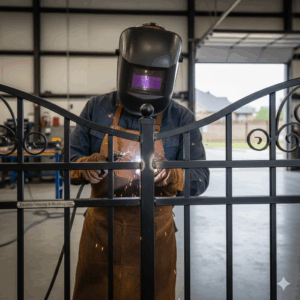Guniting, often used interchangeably with shotcreting, is a highly effective technique for concrete repair and strengthening. It has become a go-to solution for civil engineers, builders, and infrastructure developers who seek long-term durability without excessive cost or disruption.
What is Guniting?
Guniting is the process of applying dry-mix concrete or mortar using compressed air through a hose and nozzle onto surfaces at high velocity. This method ensures tight compaction and excellent adhesion, especially on vertical or overhead surfaces.
There are two main types:
- Dry Mix Guniting: Dry materials are fed into the nozzle, and water is added just before application.
- Wet Mix Guniting: Pre-mixed concrete is pumped through the hose.
Why Choose Guniting?
Guniting offers multiple advantages that conventional methods can’t match. These include:
- Strong Bonding: Ideal for old surface rehabilitation.
- Minimal Formwork: Saves time and cost.
- Access to Hard-to-Reach Areas: Useful for overhead or curved surfaces.
- Reduced Shrinkage Cracks: Results in a dense and uniform layer.
- Quick Application: Shortens repair project timelines.
All of these benefits are best realized when the process is handled by skilled guniting contractors.
The Role of Guniting Contractors
Expertise matters. Guniting is not just about spraying concrete it requires proper mix design, pressure control, and experienced handling. Professional guniting contractors ensure:
- Correct surface preparation
- Efficient material application
- Accurate layer thickness
- Proper curing practices
- Long-term durability
Contractors also bring in the required tools and safety compliance, which is crucial on high-altitude or confined site work.
Applications of Guniting in Indian Infrastructure
1. Retaining Wall Strengthening
In hilly areas or infrastructure projects like railways and highways, gunite is sprayed over steel mesh to strengthen retaining walls. This helps prevent erosion and slope failure.
2. Tunnel Linings
Guniting is widely used in tunnel lining works. Its ability to adhere to curved surfaces and support load-bearing makes it ideal for underground construction.
3. Repair of RCC Structures
Reinforced concrete columns, beams, and slabs affected by corrosion or cracks are commonly repaired using guniting. The pressure-applied mortar fills voids and builds a strong overlay.
4. Slope Protection
In areas prone to landslides or soil erosion, guniting with wire mesh anchors is used to stabilize slopes effectively.
5. Water Retaining Structures
Reservoirs, swimming pools, and water tanks often use guniting for repair or even original construction, due to its water resistance and crack control.
Why Guniting is Gaining Popularity in India
India’s rapid urbanization and aging infrastructure demand faster, more reliable construction and repair solutions. Guniting fits this requirement perfectly because:
- It allows non-disruptive repair in live environments.
- It provides cost-effective strengthening without total demolition.
- It can be done in tight spaces and irregular surfaces.
- It uses less labor, making it feasible even in remote locations.
From metro rail projects to old residential buildings, guniting contractors are playing a crucial role in transforming Indian infrastructure.
Qualities of a Reliable Guniting Contractor
When hiring a contractor, consider the following attributes:
Experience
Look for contractors with at least 5–10 years of hands-on experience in guniting projects.
Equipment
They must own or operate high-quality shotcrete machines, compressors, and mixing units.
Safety Practices
Proper gear, training, and adherence to safety norms are non-negotiable.
Material Knowledge
Expertise in mix ratios, sand gradation, and additive selection is essential.
Project Portfolio
A history of successful projects in both private and government sectors shows reliability.
Comparison: Guniting vs Conventional Concrete Repair
| Feature | Guniting | Conventional Concrete |
| Application Speed | Fast | Slower |
| Surface Prep | Minimal | Extensive |
| Formwork | Not required | Required |
| Material Wastage | Low | Higher |
| Labor Requirement | Less | More |
| Crack Resistance | High | Moderate |
| Cost-effectiveness | Higher in long term | Varies |
Guniting stands out in most use cases, especially when you want fast, durable, and efficient results.
Tips for Ensuring Quality Guniting Work
Even the best contractors need guidance. As a site owner or engineer, follow these tips:
- Inspect Surface Cleaning: Remove rust, dust, and oil from the existing surface before application.
- Check Mix Design: Ensure the sand-cement ratio and water content meet the structural need.
- Monitor Nozzle Distance: Optimal spray distance prevents rebound loss.
- Layer-by-Layer Application: Avoid thick one-time layers to prevent sagging.
- Post-Curing: Use water curing for at least 7 days to ensure proper hydration and strength.
Future Scope of Guniting in India
As smart cities and infrastructure projects increase, the demand for guniting contractors will rise sharply. With its suitability for both new constructions and repairs, guniting is becoming a standard solution in:
- Bridge retrofitting
- Dam and canal lining
- Factory building rehabilitation
- Heritage structure repair
- Coastal protection walls
New materials like fiber-reinforced gunite and polymer-modified mixes are also being explored, further widening the scope.
Guniting is not just a process it’s a solution. When done right, it can restore and extend the life of structures for decades. In a country like India, where monsoons, heat, and load-bearing demand are high, durable repair methods like guniting are essential. Selecting the right guniting contractors can make all the difference between a temporary fix and a long-term structural solution. Whether it’s for a commercial building, infrastructure project, or residential repair, make an informed choice and ensure your structures stand the test of time.









